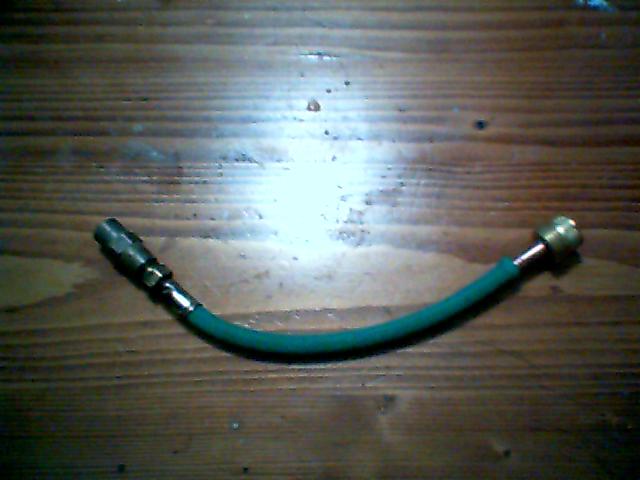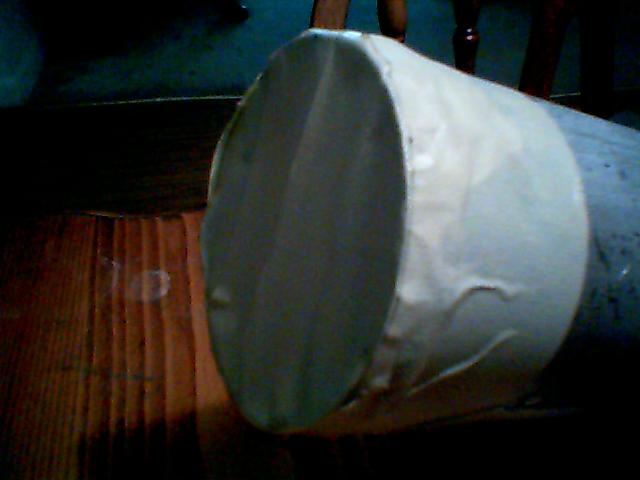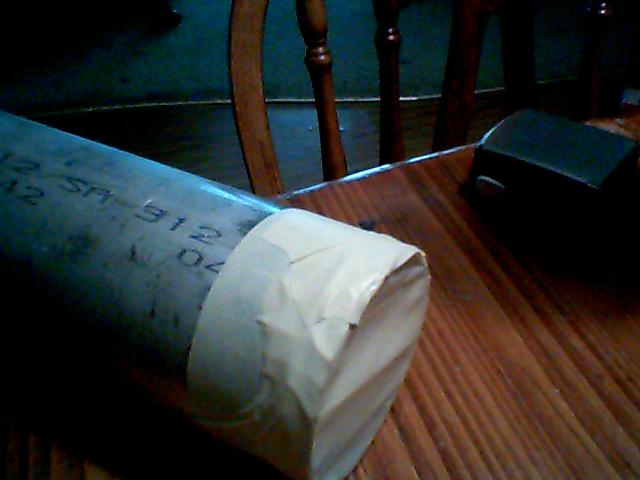Let the purge gas flow long enough to displace the internal volume of the pipe spool seven times. That should dilute the air in the system down to about 0.75% air, which is about 20% oxygen with the remainder mostly nitrogen. The oxygen content should be sufficiently low enough for most welding operations and will result in a shiny silver root when welding stainless steel or even titanium.
It is best to limit the flow rate so as to minimize mixing of the air with the purge gas. High rates of flow increase turbulence and mixing. Total volume is simply flow rate, (yes, my little buckaroo, a flow meter is a necessary complication) read from the flow meter, times the number of hours (or fractions thereof). So, assuming the pipe spool has an internal volume of 1 cubic foot and if a flow rate of 15 cfh is used, it would take about 1/2 hour to completely purge the system. If you increase the flow rate to 30 cfh, the purge time is reduced to about 15 minutes. This approach is very conservative because it assumes complete mixing of the air and purge gas. The use of the oxygen meter will most likely reduce the purge times considerably.
I prefer U-groove edge preparations with a root face limited to about 1/32 inch and zero root openings to minimize leakage of the purge gas. Complete joint penetration is not a problem if the root face is limited. Multiple joints are easily accommodated. Bladders or dams can be used to minimize the volume of gas and time required to obtain an acceptable purge. There are soluble paper dams that flush out with water when the system is hydrotested. There are some clients that object to the soluble paper dams, so in that event, inflatable bladders can be inserted to reduce the volume of the system during purge, but then the bladders have to be removed after welding is completed.
It is best to check the completeness of the purge with an oxygen meter. The use of a cigarette or "stink sticks" to monitor air (oxygen) content are not as definitive as the oxygen meter and I've seen problems with oxidized roots using those alternate techniques, i.e., they give false or misleading indication the purge is complete.
Weld the joint closest to the purge source, i.e., purge hose connection, first and progress toward the furthest joint. Weld branch connections toward the top of the spool last based on the assumption that the air is lighter than the purge gas (argon), thus will rise toward the top. Vent holes should be located in the upper most portions of the spool and at each branch to allow the air to "rise" and escape. Reduce the flow rate once welding has begun to reduce the tendency to produce concave root surfaces (suck back), but allow the purge gas to flow while welding to minimize air reentering the system. Don't forget that oxygen isn't the only contaminate to consider. Nitrogen is not truly an inert gas and it can cause complications if it isn't excluded from the spool. Nitrogen can be used as a purge with some stainless steels, but it is also an alloying constituent with certain alloying systems. Being a conservative fellow, I prefer to use argon in all cases to minimize the opportunity of a welder using the wrong purge gas. Gas is cheap compared to replacing the welds.
The use of tape is "iffy" to seal the open joints. There is an aluminum tape available specifically for welding. It is somewhat pricey, so companies, being the cheap SOBs they are, use duct tape, masking tape, and other inexpensive alternatives. The sticky stuff is very sticky when heated and it leaves a residue on the surfaces of the pipe. The adhesive is a contaminate that can be vaporized by the heat of welding. The vaporized adhesive components can easily be drawn into the shielding gas and contaminate the weld. This is not desirable. If you tape the joints to minimize the volume of purge gas escaping the spool, buy the "good stuff", pricey as it is.
The use of a gas lens or diffuser is not necessary in my opinion, but if it works or satisfies the welder, then use it. I do recommend pipe caps on the ends of all open pipe or fittings. Plastic end caps are fine if the heat of welding does not cause them to overheat and produce vapors or melt. I prefer socket end caps that slide over the end of the pipe or a plug that can be inserted snugly in a fitting. Some small amount of gas leakage is fine, after all, the air needs someplace to escape so there is no pressure build-up to produce concave roots or worse yet, a blow out of the final weld as the root pass is just about to be completed!
The magnehelic gage limits the internal pressure to prevent "blow-outs". You still have to time the purge to ensure it is complete.
I almost forgot, water is also a problem. The system must be completely dry and free of moisture. This problem occurs most often with modifications to existing systems or in the field when the pipe spool is left over night. The humid air can cool and condense overnight, in which case the entire pipe spool may have to be heated to a temperature higher than the dew point to ensure all the moisture has evaporated. It is true the purge gas is "dry", but it would take a very long time to rid the system of condensate using purge gas alone.
Best regards - Al






